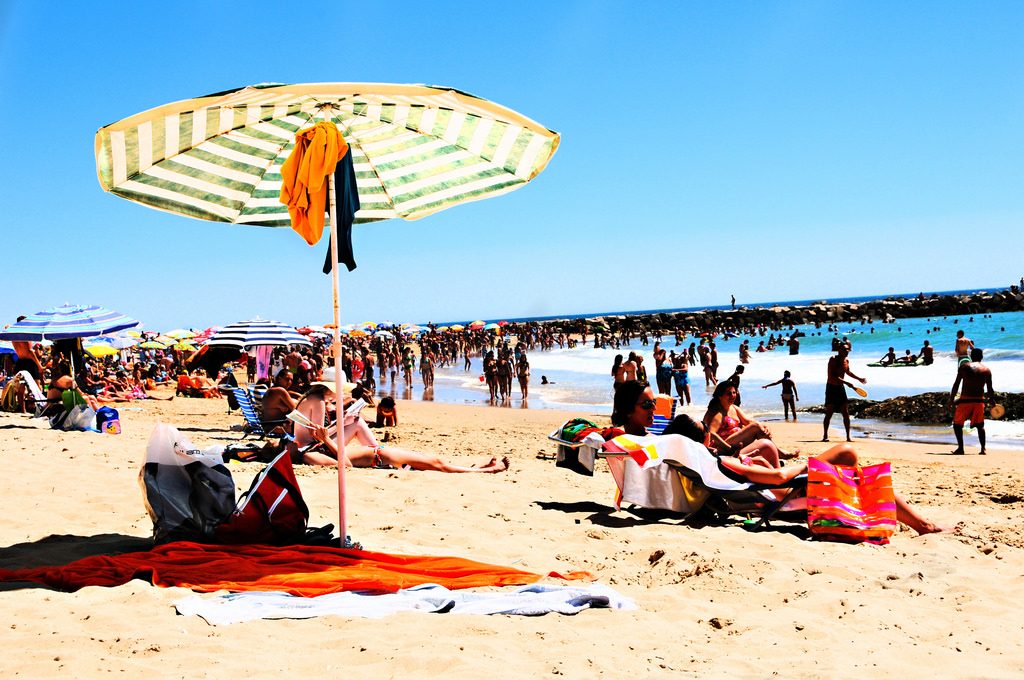
Photo courtesy of SubtlePanda.
With the first days of summer upon us, now is the time people start thinking about beaches, barbecues, boating, working on tans and hopefully, sun protection. But what does sun exposure have to do with breast cancer?
The Melanoma-Breast Cancer Link
While tanning and sunburns don’t increase breast cancer risk, it does increase risk for melanoma, a type of cancer (typically of the skin) whose primary cause is ultra-violet light (i.e. sun) exposure.
A 2004 study published in the International Journal of Cancer found that breast cancer survivors were 16% more likely to develop cutaneous melanoma than women who have not had breast cancer. And female melanoma survivors had an 11% increased risk of being diagnosed with breast cancer as second cancers. More strikingly:
“Among young [breast cancer] patients, we observed a 46% elevated risk of a second [cutaneous melanoma]. Women who underwent radiation therapy exhibited a 42% increased risk for [cutaneous melanoma].”
The study also found that patients with a mutated BRCA2 gene, which increases risk for developing breast cancer, and those with a mutation on the melanoma susceptibility gene, CDKN2A, are both more likely to develop the other cancer compared to those without these gene mutations.
A 2009 article in the Irish Journal of Medical Science also supports the bi-directional melanoma-breast cancer link (i.e. the diagnosis of one, increases the risk of the other), based on its analysis of patient histories in the National Irish Cancer Registry database.
A later study in the Archives of Dermatology, published in 2011, analyzes instances of melanoma as a second cancer and researchers found a similar increase in risk levels. This study found that female breast cancer survivors younger than 45 years old had a 1.38 relative risk (or 38% increase from the general population) of developing melanoma as a second cancer. Female breast cancer patients 45 years and older had a 12% increase in the risk for being diagnosed with melanoma.
What Can We Do?
Both breast cancer and melanoma survivors should be vigilant and take extra preventative and early detection measures to reduce their risk of developing a second cancer.
Lifestyle changes like quitting smoking , maintaining a healthy weight, exercising, and minimizing alcohol intake can help reduce breast cancer risk. To detect breast cancer early, women over 40 should get yearly mammograms and all women should conduct monthly breast self-exams.
Melanoma risks can be reduced by avoiding tanning beds and excessive sun exposure. If you plan to be in the sun or in reflective areas (water or snow), cover up with a hat and dark, dry, tightly-woven clothing. Special UPF-rated clothing, clothing which protects against UV rays, is also available. Sunglasses that block both UVA and UVB rays will help protect the eyes and delicate skin around the eyes. For exposed skin, use a broad-spectrum sunscreen of SPF30 or above that blocks UVA/UVB. Apply sunscreen frequently and liberally and follow the product’s instructions. Talk to your doctor about getting a skin exam and do a skin self-exam on a regular basis. These check-ups can help you learn what is normal for your skin, what is changing, and what may need a closer look.
If you think you are a candidate for BRCA2 or CDKN2A gene testing based on family or personal history, consider talking to your doctor or genetic counselor. The BRCA2 gene substantially increases a breast cancer survivor’s risk of melanoma and the CDKN2A gene increases a melanoma survivor’s risk of breast cancer. This additional information can help you and your doctor create a better early detection strategy for both cancers.
Gene research is still new and quickly changing. As we learn more about new hereditary genes, cancer-related gene risk factors, and the complex relationship between primary and secondary cancers, we hope to better understand the link between melanoma and breast cancer.
Remember, while cancer may be scary, knowledge is power, and by learning more about your body and your risk factors, you can take control of your health and reduce your risks.
